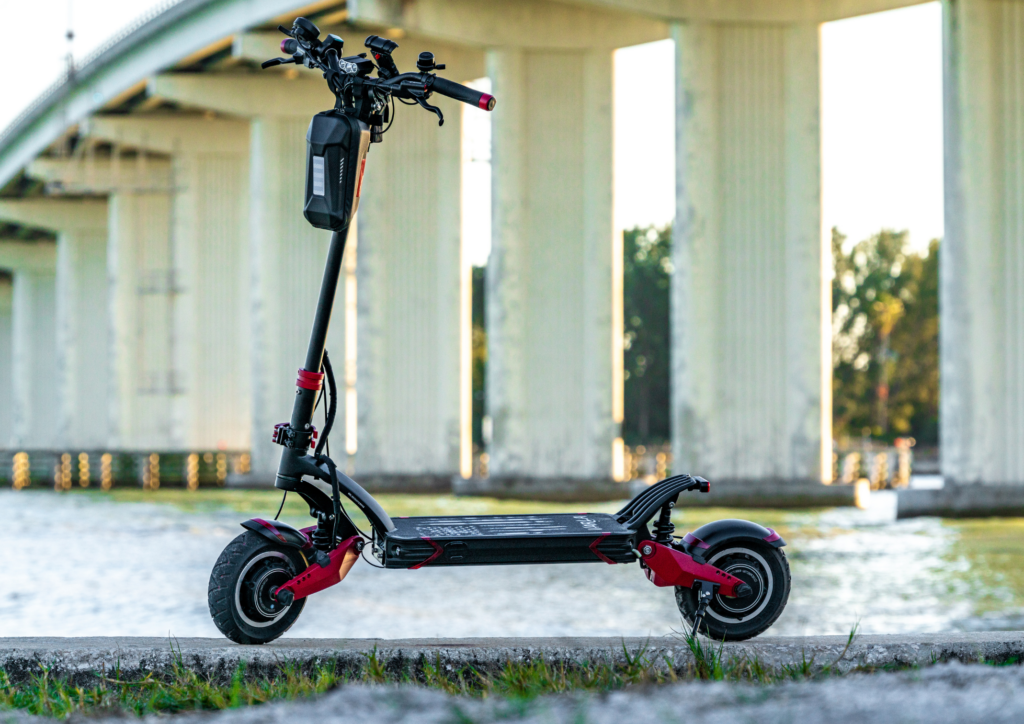
Electric scooters have taken the urban transportation world by storm, offering a convenient and eco-friendly mode of commuting. At the heart of this modern marvel lies an intricate interplay of technology, from the unsung hero – the battery, to the ever-dynamic motor. Interested to delve into the depths of electric scooters? Let’s discover the mechanics that empower these sleek, futuristic rides.
Batteries: Powering the Ride
Many electric scooters are powered by rechargeable lithium-ion batteries, known for their high energy density and longevity. These batteries store the electrical energy that fuels the scooter’s motor. The chemistry within these batteries allows for the efficient storage and release of energy, enabling riders to zip through the streets with ease. Understanding the nuances of the battery technology sheds light on how electric scooters are more than just a breeze – they run on ingenuity and sustainable energy.
The Brains of the Operation: Controller and Circuitry
Just like the human nervous system, electric scooters rely on a central controller and circuitry to seamlessly coordinate the flow of energy. The controller acts as the brain, interpreting signals from the throttle and brake, and modulating power to the motor. Meanwhile, the intricate circuitry ensures that every volt and ampere are harnessed efficiently, contributing to the scooter’s seamless functionality. It’s the hidden orchestra that orchestrates every ride, working tirelessly for a rider’s convenience.
From Power to Motion: Unraveling the Motor
A key component that propels the electric scooter into motion is the electric motor. Usually compact yet potent, the motor converts electrical energy into kinetic energy. To achieve this, it efficiently spins through the inner workings of electromagnetic forces, sparking movement and acceleration. The evolution of motor technology has fueled the rise of high-performance electric scooters, redefining urban mobility in the process.
In the Fast Lane: Understanding Speed Control
Speed control is a vital aspect of electric scooters, responsible for regulating the pace and power distribution. Through pulse-width modulation (PWM) techniques, the controller modulates the power input to the motor, allowing for precise speed adjustments. This not only provides a smoother ride but also enhances energy efficiency, ensuring that every watt secures maximum personal-distance coverage. The mastery of speed control brings sophistication to the riding experience, making electric scooters truly customizable to a rider’s preferences.
Conclusion: Paving the Path to Tomorrow: Navigating the World of Electric Scooters
Electric scooters serve as a testament to the innovative potential of clean urban mobility. From the chemistry of batteries to the dynamic precision of motors, the mechanics of electric scooters stand as a model of sustainable efficiency. As these e-rides continue to reshape the landscape of city commuting, the quest for even greater performance and eco-friendliness drives ongoing advancements in the domain. By understanding the core mechanics that steer electric scooters, we gain a newfound appreciation for the sophistication within these seemingly simple machines, guiding us towards a future of conscious and exhilarating transportation.

I’m impressed that the blog post is breaking down the tech behind electric scooters. It’s really helped me understand why they’re a more efficient option.
Thank you, Nurul Aisyah, for sharing your thoughts on the blog post! Understanding the technology behind electric scooters is crucial in appreciating their potential to make a positive impact on urban mobility. At Eko Life Malaysia, we’re committed to making eco-friendly vehicles more accessible and affordable. If you have any more questions or concerns about electric scooters or our products/servicing, feel free to reach us at [email protected] or +60 3-7890 3042. We’re here to help!
I was a bit lost at the part where it explained the role of circuitry, but overall, the post was informative. Maybe add a diagram for clarity?
Hi Adrian Tan, thank you for taking the time to read our post and share your thoughts. I’m glad you found the content informative, despite feeling a bit lost at the part about circuitry. Adding a diagram is a great idea, and we’ll definitely consider it for future updates. To better understand circuitry, I recommend checking out our YouTube channel, where we have in-depth explanations of various scooter parts, including circuitry. If you have any further questions or would like to discuss circuitry or anything else, please don’t hesitate to reach out to us at [email protected] or call us at +60 3-7890 3042. We’re happy to help and look forward to hearing from you.
The blog had me thinking about how far electric technology has come. Really makes you consider how this could shape our future cities.
That’s a great point, Kavita! Electric technology has indeed made tremendous progress in recent years. At Eko Life Malaysia, we’re committed to empowering eco-friendly mobility through our products and services. We’re excited to see how advances in electric technology can shape the future of our cities. If you’re interested in learning more, feel free to contact us at [email protected] or +60 3-7890 3042. We’d be happy to chat more!